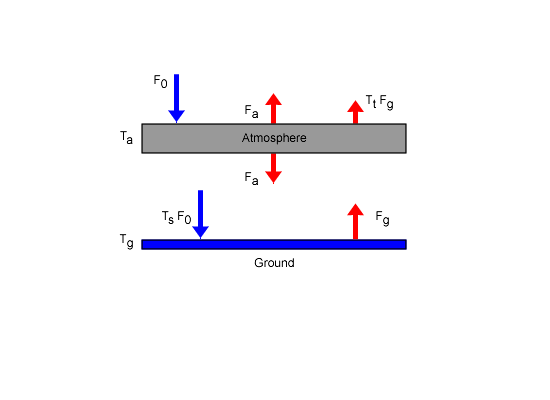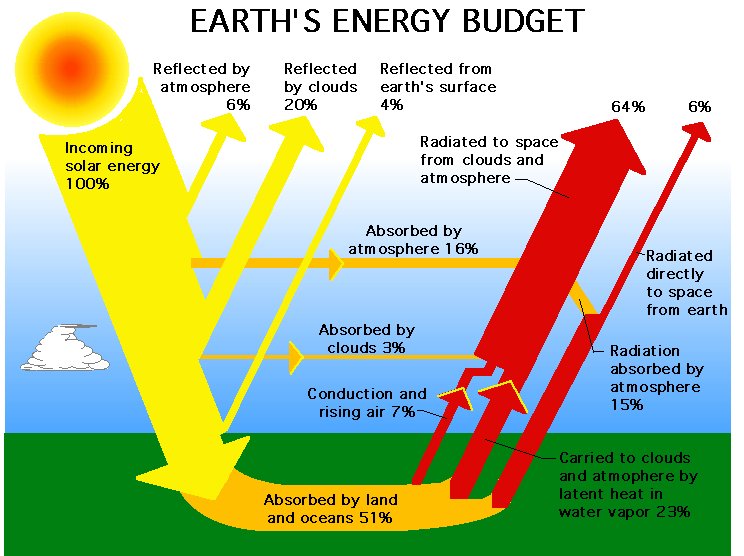One Layer Model (e.g. our atmosphere)
We assume the following:
- The temperature of the surface of the planet is constant
- The atmosphere is a shell of negligible thickness
- The atmosphere is isothermal
- All the shortwave radiation that is not reflected reaches the planet's surface
- All the longwave radiation emitted by the planet is absorbed by the atmosphere
Energy Balance in the One Zone Atmosphere

Fo = incident flux
Ts = transmission percentage of short wavelength incoming radiation
Tt = transmission percentage of outgoing long wavelength radiation
Fg = Flux from ground
Fa = Flux from the atmosphere.
How this all works, physically:
-
Incident flux from the sun on the top of our atmosphere Fo
is filtered through the atmosphere by its short wavelength transmittence
Ts , where 0 < Ts < 1.0
- The flux that reaches the ground is then Fo * Ts
- That flux is absorbed by the ground and the ground heats up
to some temperature (Tg).
- The ground then re-radiates that heat as outgoing long wavelength
IR radiation (Fg).
- Some of that flux (Fg) is absorbed by the atmosphere
through its long wavelength transmittence Tt , where 0 < Tt < 1.0
- The combination of absorption of short (s) and absorption of long (t)
wavelength radiation causes the atmosphere to heat up to a temperature
(Ta) and then radiate that temperature away as flux (Fa); 1/2 of it up (into space) and 1/2 of it down (back to ground) This is the key physics and occurs because we can model the atmosphere as a thin slab
- Since as much flux goes out of the system as comes into the system
we can set up the following equilibrium conditions.
- Let Fa = Fo - Tt *Fg
and substitute then; eventually get that
Fg = Fo *(1+Ts)/(1+Tt)
For our atmosphere: Ts = 0.9; Tt =0.2  Fg = 1.6*Fo which leads to a 30-35K increase
in the nominal surface temperature. Fg = 1.6*Fo which leads to a 30-35K increase
in the nominal surface temperature.
That is, we previously calculated the equilibrium temperature to be 254K.
With the atmosphere we would now have
Tg = 255*(1.6)1/4 = 288K
Note that transmission coefficients are a bit complicated in radiative transfer. They are really calculated in units of
Specific Intensity . They are not exactly the same as the energy balance units shown below.
Components of Ts

Components of Tt

|